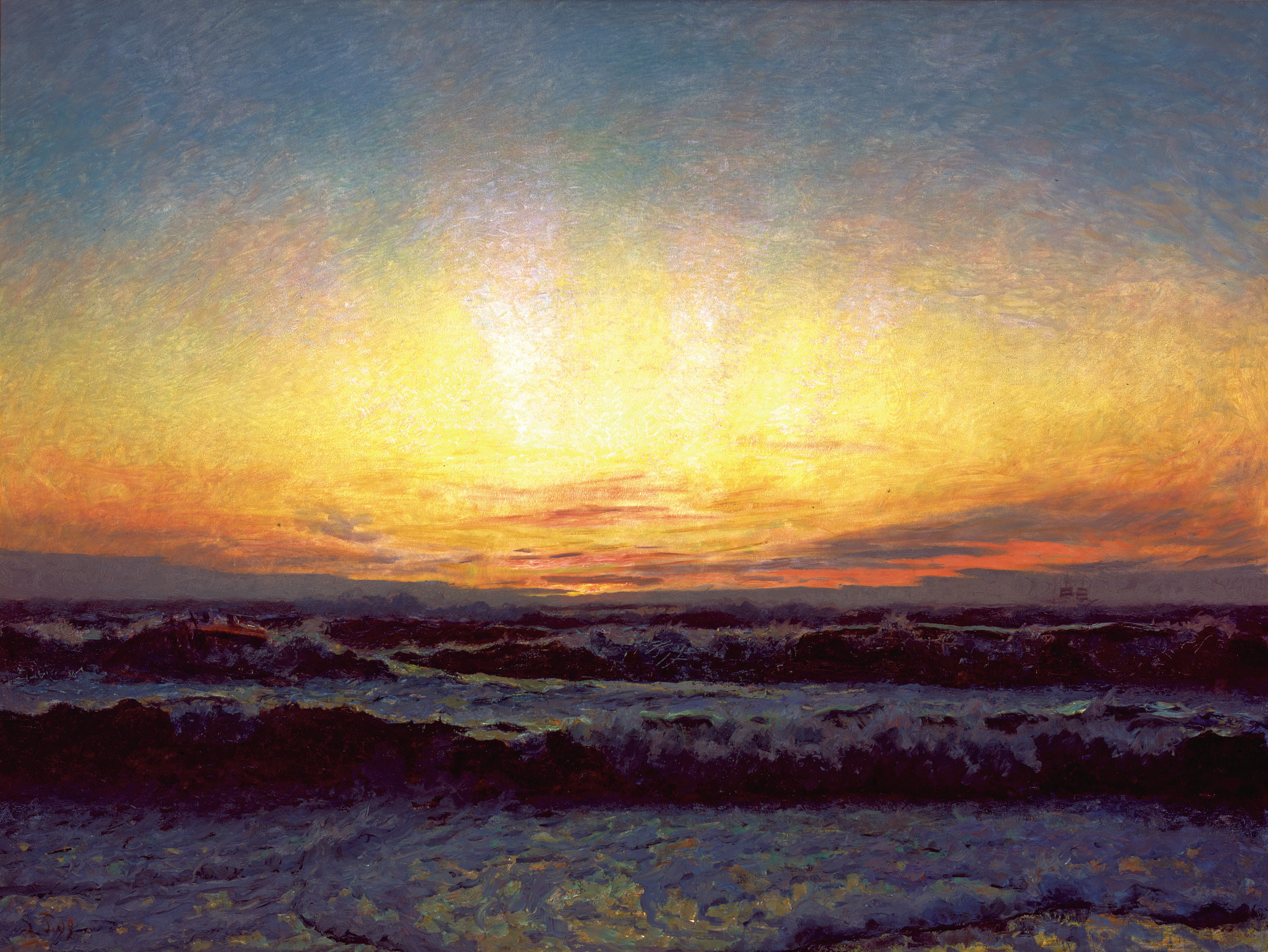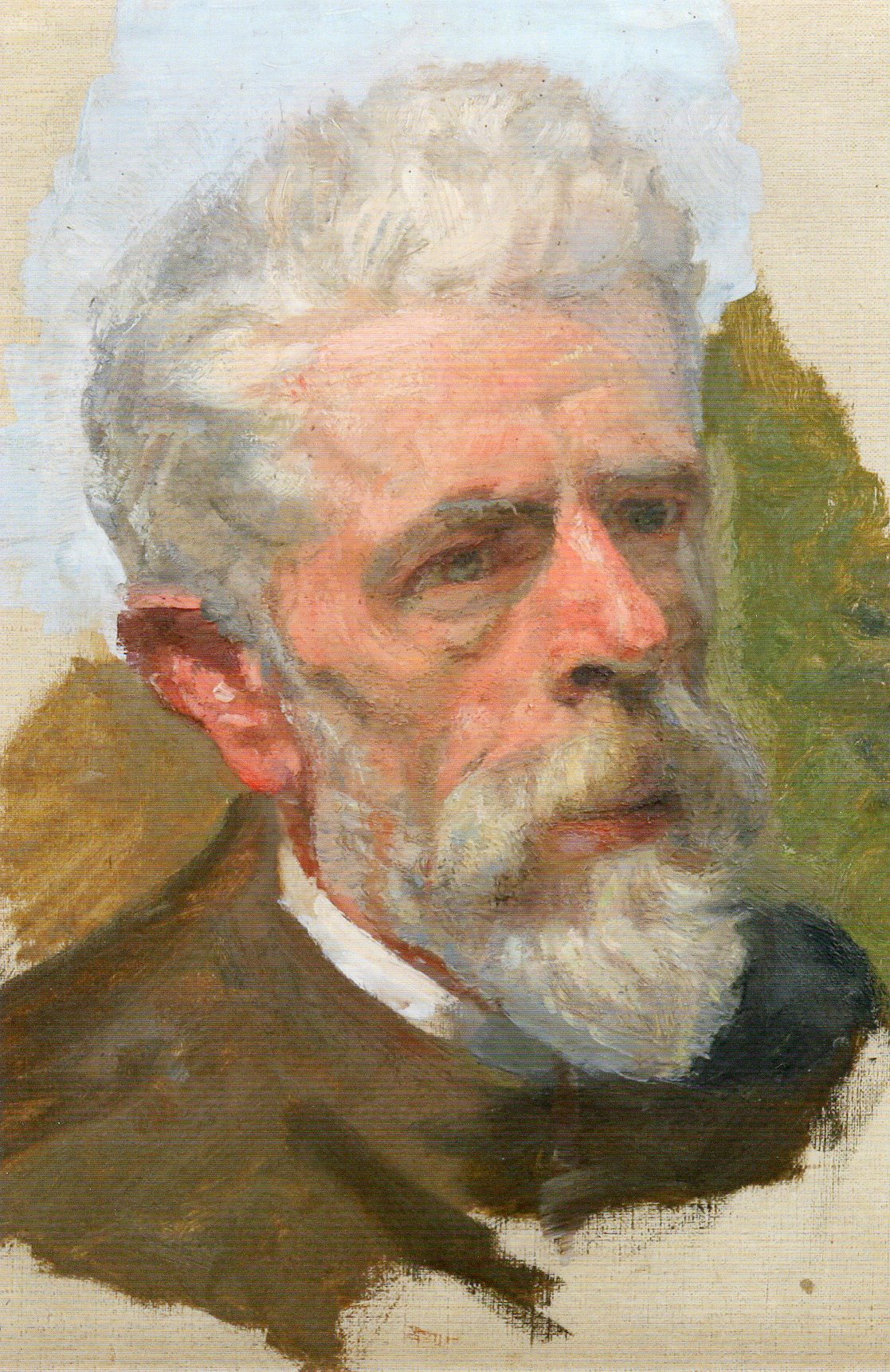This is the last painting from the great Skagens Museum's collection we present to you this month. We hope you loved those beautiful pieces of art as much as we did :) Have a great Saturday!
When viewing this work in real life, the first thing one really is struck by is the size of the painting. It is precisely the size which enhances the sensation of standing in front of a restless sea because the viewer is left with the feeling of being able to step directly into the picture. The relatively low horizon of the motif enhances this experience. Laurits Tuxen painted the sunset exactly at the point when the sun has set, only the shining golden color remains in the sky, and the last rays of the sun are reflected in the waves in the foreground. The cool blues contrast with the warmth of the oranges and yellows. One can just about catch a glimpse of a distant ship in the background. Back then, the waters around Skagen were still the cause of numerous shipwrecks and beachings.
Perhaps this is why Tuxen painted a shipwreck in the foreground to the left. The artist is one of the lesser known Skagen painters who had not received much attention. A likely reason is that he was not a resident in Skagen when the artists’ colony was at its peak at the end of the 19th century. Another feasible reason is that he was a lot more than just a Skagen painter and thus difficult to categorise. At the end of the 19th century Tuxen, like P.S. Krøyer, was considered to have a great painting talent, but contrary to Krøyer, to whom he can be compared in many respects, he chose to pursue a career as a royal portrait painter at the beginning of the 1880s. At that time, the Modern Breakthrough in Danish art and literature was a reality and Tuxen’s choice was not a popular one amongst his fellow artists and radical art critics. Tuxen only returned to Skagen in 1901, just when the colony’s influence on Danish art had started to dwindle rapidly. Today he is known first and foremost as a royal painter and as co-founder of Skagens Museum, established in 1908.


 Laurits Tuxen
Laurits Tuxen